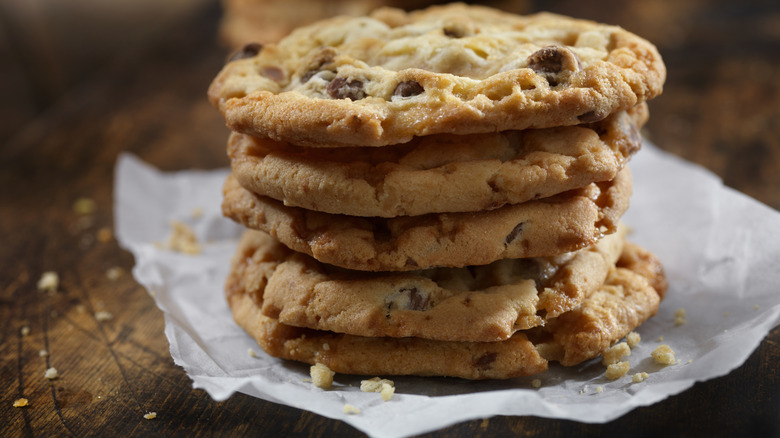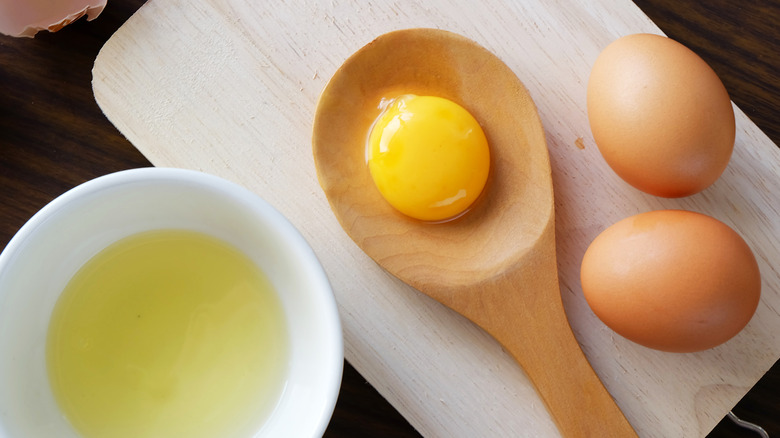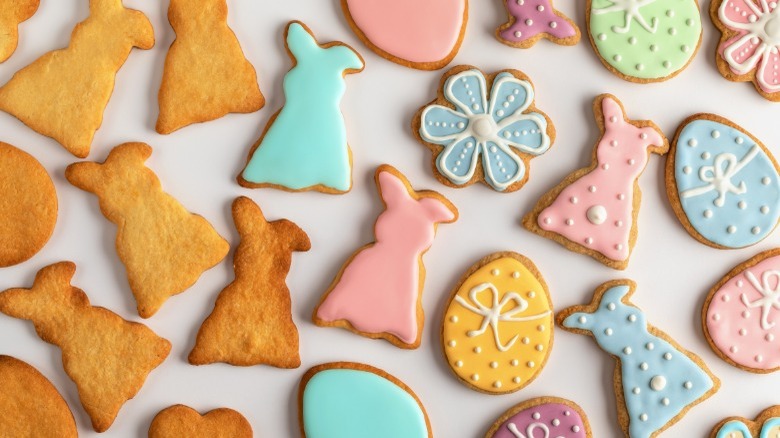For The Most Decadent Cookies, Only Use One Part Of The Egg
Crafting cookies in your own kitchen that live up to those you'd buy in a bakery is challenging, and it can be tempting to settle for pre-made dough. However, there are numerous ways to elevate your cookies, and sometimes it all comes down to how you use the eggs.
To achieve ultra-rich and decadent homemade cookies, such as the iconic chewy chocolate chip, using only the yolks — instead of the whole egg — when building your dough is the way to go. The creamy yellow center, commonly used to create thick custards or sauces like basic hollandaise, can provide a moist and cakey texture, adding a new depth of flavor to the treats. Although yolks can have more "eggy" notes than whites, this shouldn't impact the overall taste of the cookie. Keep in mind, however, that when using only the yolk, you'll likely have to double the number of eggs the recipe specifies to ensure you're incorporating an equivalent amount of liquid — but the rest of the ingredient measurements can remain the same.
The science behind why yolks work so well
Egg yolks are known as a hydrocolloid emulsifier, which means they act as a thickening agent and can upgrade the consistency of ingredients to which they're added. More specifically, emulsifiers help to combine ingredients that normally don't like to mingle — like oil- and water-based ingredients — giving the final product a smoother and more velvety texture. Additionally, yolks contain all of an egg's fat content, and more fat translates into more flavor. Compared to whites, yolks will provide that extra decadence to your cookies, and if you want uber-moist cookies with a soft and silky texture, sticking to just yolks is a good way to get there.
As it turns out, even in their hard-boiled form, yolks can benefit your baked goods. While it might sound odd at first, the hard-boiled variety actually helps your bakes stay tender by preventing too much gluten from forming in the dough. The technique is simple — basically, all you need to do is push the solid yolk through a sieve and incorporate it into your dry ingredients. When mixed with the flour, the now-fine cooked yolks act as a barrier to disrupt gluten formation once the liquid ingredients are added, all without making the batter too dense.
Don't throw out the whites!
Using only yolks in your cookies doesn't mean you need to get rid of the extra whites. Not only can egg whites be whipped into a foam to help aerate baked goods, but they can also be used create royal icing. Made from egg whites, confectioners' sugar, and vanilla at its most basic level, royal icing is unique because it starts as a liquid, but hardens to a shiny shell coating that's perfect for topping your sugar cookies.
Royal icing is simple to make, but getting the consistency right can sometimes be a challenge because each level of viscosity has its own use in decorating. The thinnest consistency with the most liquid is used for what's called flooding — the technique for establishing the base layer of frosting on a cookie. Slightly denser is medium consistency, which can be piped into text or design outlines. Finally, stiff royal icing is the most solid, and can be used to create three-dimensional decorations like flower petals. When decorating, you can use any combination of the three to create unique (and tasty) designs. And, if you want to kick up the flavor, vinegar is often a secret ingredient added to icing to enhance both its taste and durability.



